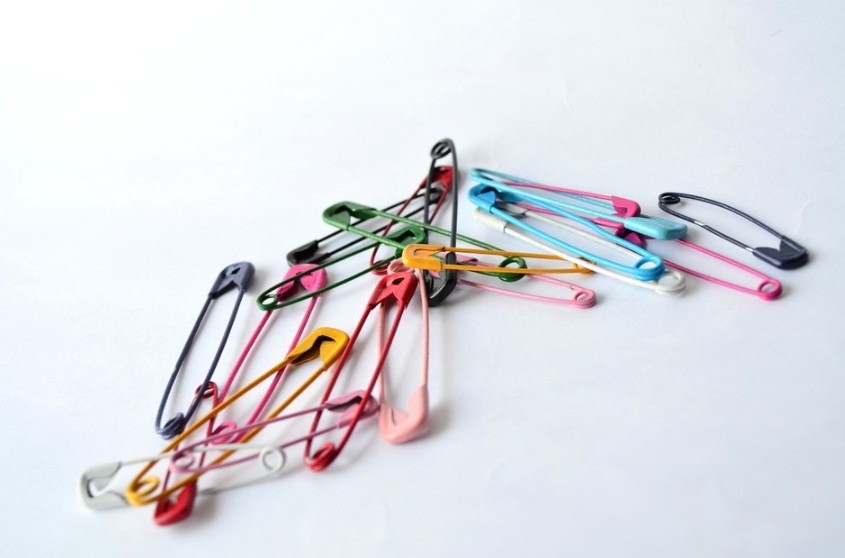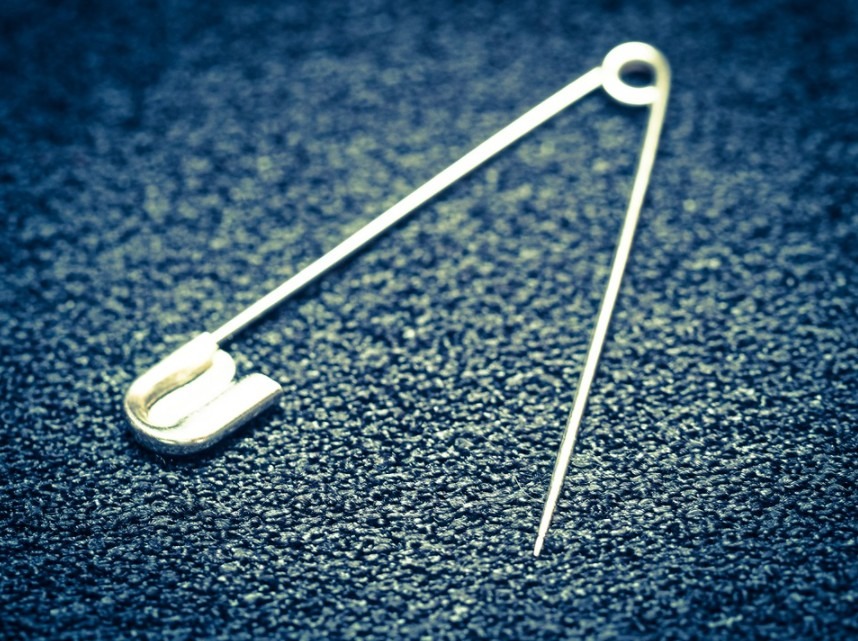A safety pin is a basic pin that functions with a spring mechanism and a clasp. The clasp at the upper end can create a closed-loop to fasten the pin to whatever it is attached to appropriately, and this also serves as a cover for the other end of the pin, securing the user from the sharp point. A safety pin is typically used to fasten pieces of fabric together. In crafting pieces of clothing, a safety pin is widely used to act as an initial place-holder between fabric pieces before they are sewn together.
This basic equipment has survived through time, still bearing the exact purpose as it was invented. However simple the mechanism of a safety pin is, it remains beneficial even up to this day. From local seamstress to well-known fashion designers alike, safety pins are revolutionary, especially in the fashion industry, as it greatly helped craft our pieces of clothing.
So, who really thought of inventing the safety pin?
It was an American mechanic named Walter Hunt. Hunt was born on July 29, 1796, in Martinsburg, New York. He devised a piece of brass wire of about 8 inches long, and he made a coil in the center of the wire, acting as a spring and would clasp open when released. At one end, the rounded clasp was created as a security measure to avoid users from being poked with the pointed end of the pin.
Hunt secured the patent, Patent no. 6281, for his safety pin invention. It was issued to him on April 10, 1849. Hunt described his invention as durable, beautiful, convenient, and injury-proof.
According to accounts, he had a $15 debt to a friend by the time of the invention. Wanting to pay this off, he sold his patent of the safety pin to a company called W. R. Grace and Company for $400 – quite a sum of money as it equates to around $12,000 in 2019 dollars.
In the years to come, the company where he sold his patent of the safety pin would make a huge profit from his invention.
Hunt was also known to have invented the lockstitch sewing machine but failed to patent his design in fear that this would lead to mass unemployment for hand sewers in New York. The patent for a similar design was issued to Elias Howe 20 years later.
On June 8, 1859, Hunt died, but his safety pin’s legacy continues to live. Of course, the simplicity yet practicality and usefulness of the safety pin he invented still resonate even up to this day.
Aside from its basic function, which is to patch pieces of clothing, people have also discovered multiple uses for safety pins. Some of these additional uses include:
1. Zipping stubborn dresses closed
Some people use safety pins to zip up their dresses when they’re dressing up alone – a struggle quite exclusive among girls as they are expected to wear dresses on some occasions. They usually place a safety pin in the zipper, tie a dental floss or any durable string, and pull the zipper upwards. Creative, right?
2. Additional security to purse
Again, as simple and small as safety pins are, they can be quite handy as extra security to your purse, especially when going out in a crowded place. The trick is to loop the safety pin through the zipper and secure it.
3. Pairing socks
It can sometimes be annoying to spend minutes trying to find the right pair for your sock. Safety pins are useful when you want to cling them together so you can save time and energy in the morning, trying to go through your stuff looking for that one sock.
4. As accessories
Safety pins once led the cultural phenomenon of punk fashion. Safety pins became a trend in the 1970s, being pinned to clothing pieces in a very apparent manner. Some people also use safety pins as accessories. This is still very much influenced by the punk rock fashion movement that still exists today.
5. Close curtain endings
Are you irked by some bothersome light coming from your curtain endings at night? You can always draw these curtain endings together using a safety pin to avoid unnecessary light from peeking through your room window or door.
6. Secure back a drawstring
When a string from your favorite garment gets misdirected, you can use the pointed end of the safety pin to lead the string back to its place. Of course, this simple drawstring may even cause more damage to your clothing; therefore, a simple safety pin solution can now lock your worries away.
We can all agree to thank Walter Hunt for this simple yet innovative invention for helping us with our lives through the years, especially with providing solutions to our clothing-related concerns.

